DIY Guide: Make Your Own Low-Waste Self-Watering Seed Starter Pots
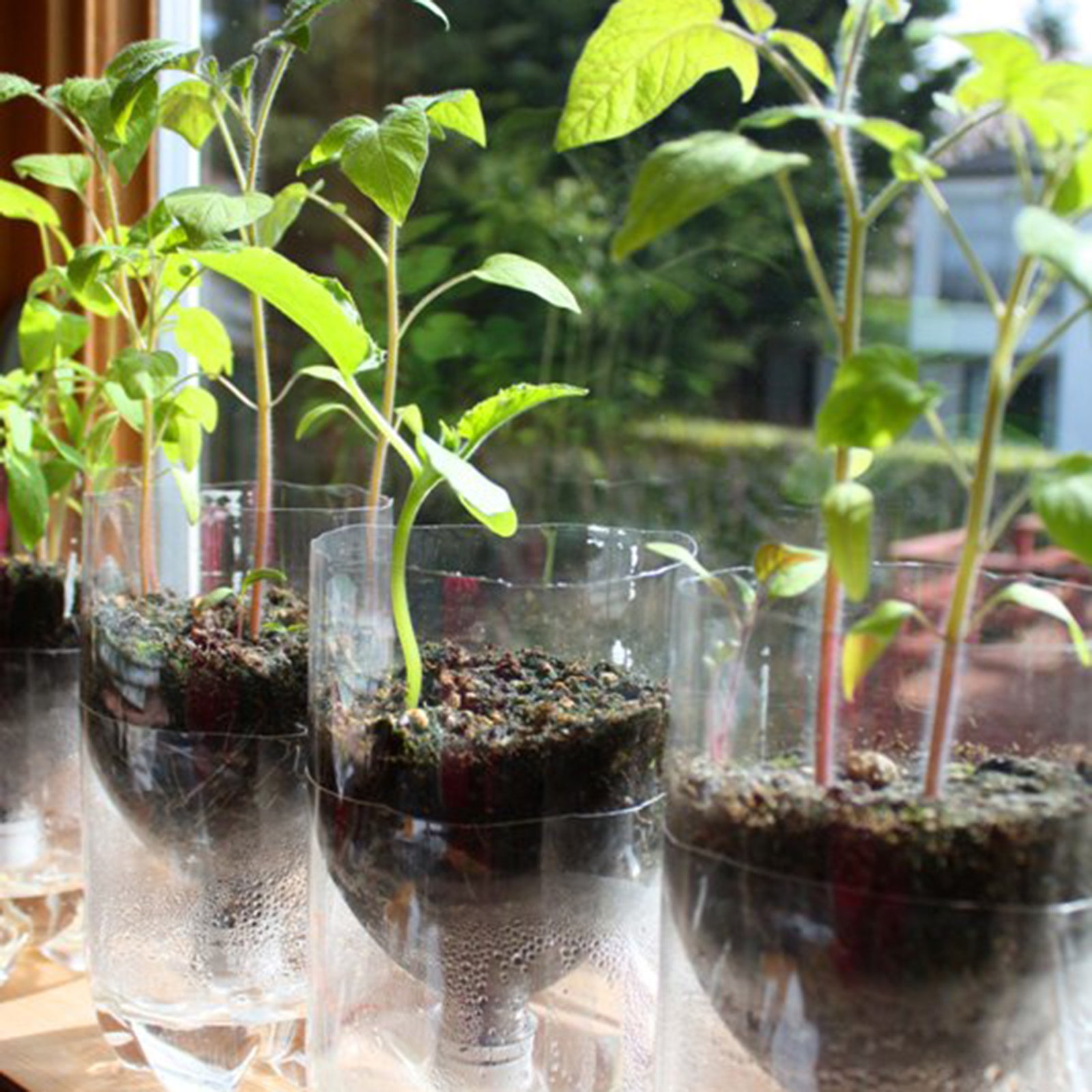
Looking for a fun and eco-friendly project to kickstart your gardening journey? We've got you covered! In this step-by-step guide, we'll show you how to create your own self-watering seed starter pots using simple materials that you probably already have at home. Whether you're a seasoned DIY enthusiast or just starting out, this project is perfect for creative minds who appreciate low-waste solutions. Let's get started!
Step 1: Gather Your Materials
To create these self-watering seed starter pots, you'll need a few basic items. Don't worry, they're easy to find and budget-friendly:
- Empty 2-liter plastic bottles
- Potting soil
- Seeds of your choice
- Thick string or yarn (preferably cotton or polyester)
- A Phillips screwdriver
- A hammer
- A sharp blade for cutting the bottle

Step 2: Prepare the Bottle Caps
Using a Phillips screwdriver and a hammer, punch a hole in the center of each bottle cap. This will create a way for water to flow from the base of the pot to the soil above.
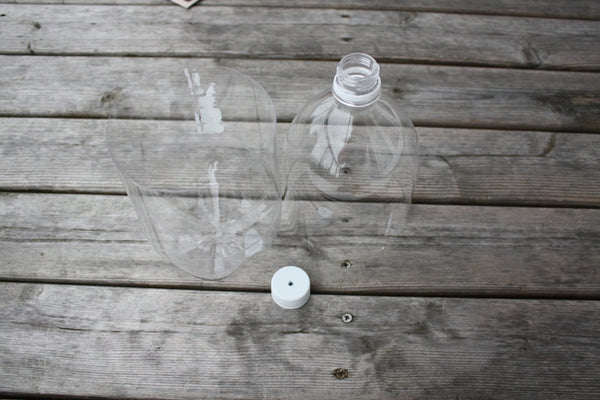

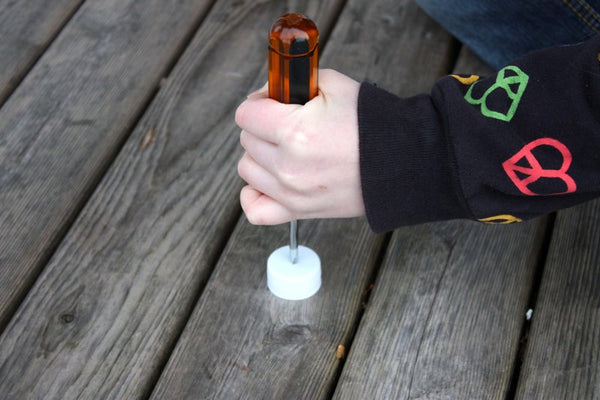
Step 3: Create the Wick
Cut a length of yarn or string, around 1 to 1.5 feet long. Double it over and tie a loop on one end. Thread the yarn or string through the hole in the bottle cap, making sure the knot is on the inside of the cap. This looped yarn will act as a wick, drawing water up from the base and into the soil as needed.
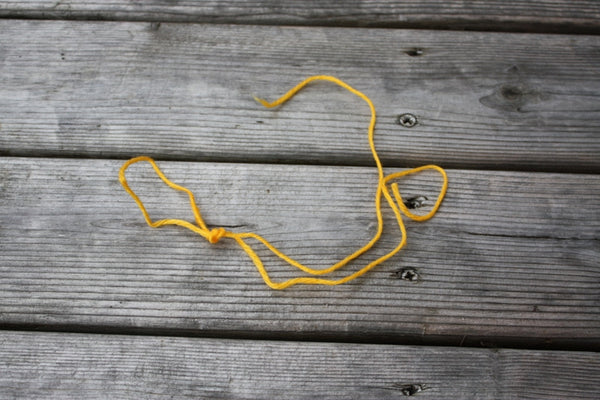

Step 4: Assemble the Self-Watering Pot
Put the cap back on the bottle top and nest the top of the bottle in the base. As your plants grow and use up the water, you can simply lift off the top part of the bottle to add more water to the base. This self-watering system ensures that the soil moisture is perfectly regulated, and there's no guesswork involved.

Step 5: Label and Water the Pots
Label your self-watering pots so you can keep track of what you planted. To ensure proper functionality, water the soil from the top the first time, making sure it is uniformly wet and the string is soaked as well. This step is crucial to maintain the surface tension needed for capillary action later on.

Step 6: Watch Your Plants Thrive
Place your self-watering seed starter pots in a sunny spot and watch them grow. The self-watering design ensures that your plants receive the right moisture levels without overwatering or underwatering. It's an efficient and effective way to nurture your seedlings.

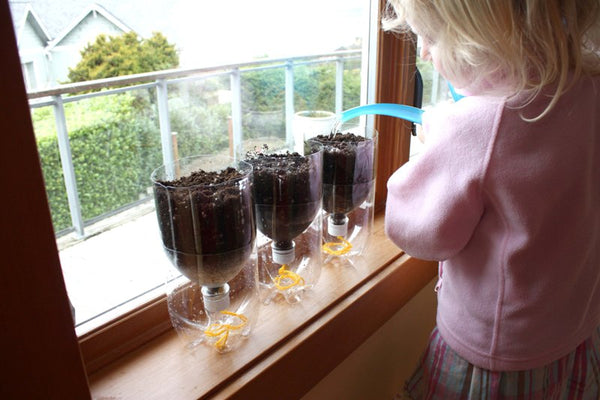
At Seattle Sundries, we're passionate about supporting sustainable and creative projects like this one. Our handcrafted products, made with high-quality natural ingredients, align with the values of authenticity and eco-consciousness. Check out our range of soaps, lotions, and lip balms that complement your mindful lifestyle.


A note to all readers:
I've had lots of great comments and questions about this post, many of which I'm not able to answer myself because I just don't have the broad range of knowledge about plants that is necessary. If you do have that knowledge, please feel free to jump on board the comments string with your input. It would be greatly appreciated!
Also, we have moved this post over (Jan, 2014) from our previous blog platform, and were unable to bring all of the excellent comments with it, so we are including a few here...
- Anonymous said...Place a block of wood under the cap when punching the hole or you will end up with a splintered deck/floor.
- Anonymous said...I use 1 quart Gatorade bottles and do the same thing. If you threw out the lid it's no big thing, use several cotton balls or a bunched up piece of paper towel, or cotton fabric, or even a piece of sponge to act as an absorber and clog the hole.
- Anne said...I also had been thinking about using an unbleached coffee filter inside the bottle, to hold the soil. This would help the moisture to wick evenly and it would make it very easy to remove the plants if you plan to transplant them into the garden at a later date. I haven't tried it yet though.
- @Jenny...The first time I water them from the top so that the soil gets a good dose of wetness. After that, I lift the top part (with the plant in it) up and pour an inch or two of water into the bottom. As long as the soil didn't completely dry back out, the water will be sucked up into the pot from below. If the soil dries out too much, it breaks the surface tension bond of the water and inhibits capillary action (which is why the whole thing works in the first place), so you would need to water from the top again. Does that make sense? Sorry for the wordy explanation.
- @Anonymous...I only add water when I see that it's close to empty in the bottom basin (every four to seven days, depending on the size of the plant). I try to never let it dry out completely. I bet this method would work well for you, even if you only water once a week. You could cut the bottle so that the lower portion was actually larger (say 70% instead of 50%) and would hold more water wile you're away.
- Anonymous said...For those who have discarded the lids, you can always use a small square of old screen to block the hole, yet water through.
- Unknown said...Don't use a screwdriver. If you want to punch it, then buy a awl or a hole punch or even use a small drill. Using a Philips head to punch the hole will probably ruin the screwdriver. Other then that: great idea.
- Anonymous said...This is a great idea! Family has been thinking about building a greenhouse - wow! this will be so much more economical. Especially since I have a sun room. I use the "wicking" system for my outdoor plants in the opposite way. No plant wants to have soggy roots all the time, so after a big rain I lay a piece of string/rope in the saucers leaving the other end on the ground so it will drain my saucers.
- Mary G said...For plants intended to go outside into the garden, I would recommend ONLY using cotton string or other biodegradable things for the wicks. You don't want to end up with a bunch of nylon/polyester strings in your soil. Yuck! LOL I also love the idea of using the tops of other bottles to create a mini-greenhouse for increasing the humidity. Ya'll are a bunch of geniuses! =)
- Anonymous said...Agree re using an awl vs a screwdriver. The screwdriver may look fine (although I would be livid if someone used mine like that!!), but the top of it is not designed to be impacted that way, and may chip off. Better to use a hot nail, a cold nail with a hammer (an surface protection if you're working on a marrable surface (or concrete which is also dangerous to work on with impact tools and no safety gear), or an awl.
- Anonymous said...Instead of lifting the top off every time you want to water, try cutting a small (maybe 1 inch) hole in the side of the water container, not large enough to compromise the stability of the bottle, but large enough to fit the spout of your watering can in. Might also help the bottle breath and discourage mold build-up.
- Backyard Farming in Michigan said...A drill works much better for the caps. Also, you can cut the bottom out of a somewhat smaller bottle and place it inside the top of the planter until the plants reach a couple of inches. It sort of acts as a mini greenhouse by keeping the humidity high which is critical for very young seedlings.
- Anonymous said...Just found this site today on fb, GREAT idea to start seedlings! Another use I have found for 2L pop bottles is to "plant" them upside down in the garden right beside the tomato plants...minus the bottle caps and with the bottom cut out, leaving some of the bottle up out of the ground. Filling the bottle with water allows the water to get to the root zone of the transplant; I tried some with and some without-huge difference in growth and health of the plants. This way there's no danger of soil fungus splashing up onto the leaves and eventually ruining the crop.
Please continue to add to the discussion!!
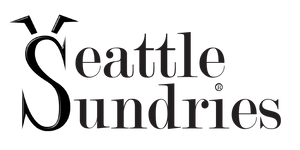
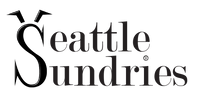
I wish I had parents like you guy’s when I was little.
Thanks so much for this! I will build some and try them out along with the many seeds I’ve been eagerly waiting to plant. I’d love to hear any more tips for growing from seed! Also, love love LOVE the mountain beaver saga! 🦫 What a diabolical-level of cute he is! Best wishes to you and your raspberries!
Can this be done with flowers? I want to do this with my students and I think it would be cute to do a flower instead of a veggie.
No need for the string. I’ve been using self watering planters for years and the soil will wick the water on it’s own.
Just a quickie note on how to get a hole in your plastic bottle cap – I use an old wood burning tool I had from crafts I no longer do. Plug it in, heat it up and press it to the cap or sides of the plastic bottle to create the hole. Works Great!!
Leave a comment